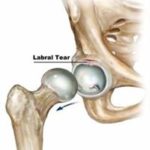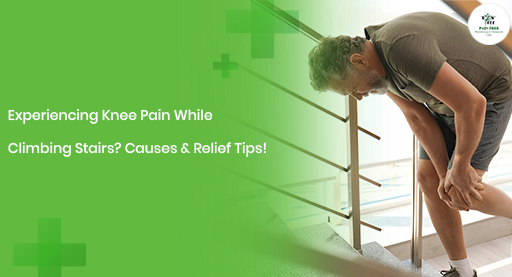Experiencing Knee Pain While Climbing Stairs? Causes & Relief Tips!
Knee pain can be a real nuisance, especially when something as simple as climbing stairs turns into a struggle. That sharp twinge, aching discomfort, or grinding sensation can make every step feel like an uphill battle literally. But what’s causing this pain, and more importantly, what can you do about it? Let’s dive into the details and find out!
Why Do You Experience Knee Pain While Climbing Stairs?
Your knees are incredibly complex joints, and they endure a significant amount of stress daily. When you’re going upstairs, your knees bear extra weight sometimes up to four times your body weight! Here are some common culprits behind that unwelcome pain:
- Patellofemoral Pain Syndrome (Runner’s Knee)
- A dull, aching pain around or behind the kneecap
- Worsens when climbing stairs, squatting, or sitting for long periods
- Often caused by misalignment, overuse, or muscle imbalances
- Osteoarthritis (Wear and Tear of the Joint)
- A common culprit in older adults
- Stiffness and pain that worsens with movement
- Breakdown of cartilage leading to bone-on-bone friction
- Chondromalacia Patella (Softening of Cartilage)
- Occurs when cartilage under the kneecap deteriorates
- Causes a grinding or crunching sensation
- Often linked to overuse, injury, or misalignment
- Ligament or Meniscus Injuries
- A torn meniscus or sprained ligament can make stairs painful
- Swelling, instability, or locking of the knee may occur
- Typically caused by sudden twists, falls, or sports injuries
- Weak or Imbalanced Muscles
- Weak quadriceps or hamstrings can strain the knee
- Muscle imbalances may lead to misalignment and pain
- Strengthening exercises can help correct this issue
How to Relieve Knee Pain While Climbing Stairs
If your knees protest every time you climb stairs, don’t worry there are plenty of ways to find relief. Let’s break them down:
- Strengthen Your Leg Muscles
Building strong muscles around your knee can reduce strain and improve stability.
Try These Exercises:
- Quad Sets: Sit with legs extended and tighten your thigh muscles.
- Straight Leg Raises: Strengthen the quadriceps without putting pressure on the knee.
- Step-Ups: Use a sturdy platform to mimic stair-climbing motion in a controlled way.
- Wall Sits: A great isometric exercise for building endurance in the thighs.
- Use Proper Stair-Climbing Techniques
- Always lead with your stronger leg when going upstairs.
- Use the handrail for added support.
- Take smaller steps to reduce strain.
- Wear Supportive Footwear
Shoes with proper arch support and cushioning can make a world of difference. Avoid high heels or worn-out shoes that don’t provide stability.
- Apply Ice or Heat Therapy
- Ice packs help reduce inflammation and numb pain.
- Heat therapy relaxes stiff muscles and improves circulation.
- Alternate between hot and cold treatments for best results.
- Maintain a Healthy Weight
Excess weight increases stress on the knee joints. Losing even a few pounds can significantly reduce knee pain.
- Consider Knee Braces or Supports
Compression sleeves, braces, or kinesiology tape can provide added support, especially if your pain stems from instability.
- Seek Professional Help When Needed
If pain persists, consult a physical therapist or orthopedic specialist. They can assess your condition and recommend treatments like:
- Physical Therapy: Strengthens muscles and improves flexibility
- Corticosteroid Injections: Reduces inflammation and pain
- Surgical Interventions: In severe cases, procedures like arthroscopy or knee replacement may be necessary
Preventing Knee Pain in the Future
Prevention is always better than cure! Follow these tips to keep your knees in top shape:
- Stay Active: Regular low-impact exercises like swimming or cycling can keep your knees strong without adding strain.
- Stretch Regularly: Gentle stretching keeps muscles flexible and reduces stiffness.
- Listen to Your Body: Don’t ignore early signs of discomfort. Address minor pain before it worsens.
- Modify Activities: If stairs are an issue, try using an elevator when necessary, or take breaks when walking long distances.
FAQs: Your Knee Pain Questions Answered!
- Why does my knee hurt more when going downstairs than upstairs?
Going downstairs places more strain on your knee because it has to absorb the impact of each step. Weak muscles or damaged cartilage can make this even worse.
- Should I avoid stairs if I have knee pain?
Not necessarily! Avoiding stairs completely can lead to muscle weakness. Instead, use proper techniques and consider exercises to strengthen your knees.
- Will knee pain go away on its own?
It depends on the cause. Minor pain from overuse may resolve with rest and care, but persistent pain should be evaluated by a doctor.
- Can I still exercise if I have knee pain?
Absolutely! Just choose low-impact exercises like swimming, yoga, or cycling instead of high-impact activities like running or jumping.
- When should I see a doctor for knee pain?
Seek medical attention if:
- Your knee is swollen or severely painful
- You experience instability or the knee “gives out”
- There’s a popping sound followed by swelling
- The pain persists despite home treatments
Final Thoughts: Don’t Let Knee Pain Keep You Down!
Experiencing knee pain while climbing stairs? Causes & relief tips are now at your fingertips! By understanding the root of the problem and taking the right steps (literally and figuratively), you can regain comfort and mobility. Whether it’s strengthening exercises, lifestyle changes, or medical treatment, relief is within reach.
Life is full of moments that require movement whether it’s running to catch a bus, playing with your kids, or simply climbing the stairs to your favorite reading nook. Knee pain shouldn’t hold you back from enjoying life’s simple joys.











